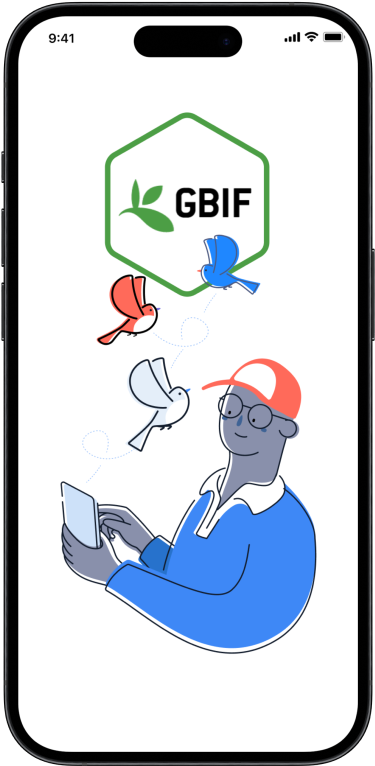loading...
Petrels, Shearwaters, Diving Petrels
The Procellariidae family, encompassing fulmarine petrels, gadfly petrels, diving petrels, prions, and shearwaters, have a significant presence within the order Procellariiformes, also known as tubenoses, which includes albatrosses and storm petrels. With great diversity and numerous species, these seabirds range from the large giant petrels, comparable to albatrosses, to the much smaller diving petrels. Both male and female procellariids appear identical and typically exhibit muted colors such as black, white, brown, and gray within their plumage. These birds are predominantly adept swimmers and foragers, feeding on fish, squid, crustaceans, and sometimes scavenging leftovers from fisheries or carrion. They are efficient at long-distance foraging and many migrate across equatorial distances. When breeding, procellariids are known to show loyalty to both their partners and nesting sites, laying a single egg that both parents take turns incubating. Despite this, not all species fare well; while some procellariids have burgeoning populations, others are endangered, threatened by predation from introduced species in their breeding habitats and by bycatch in long-line fisheries.
Historically, these birds have been exploited by humans for food and other uses, yet this practice persists on a more regulated scale today. Taxonomic studies have reshaped the understanding of their relationship within Procellariiformes, grouping the diving petrels into the same family due to genetic studies. Different procellariid groups are linked by characteristics such as skull features or diving abilities, and despite their varied appearances and habits, they share certain traits like weak legs and specific flight adaptations that assist them in their oceanic lives. They employ dynamic and slope soaring techniques to glide over waves and winds, with some species possessing a special shoulder-lock that aids in effortless flight. The family is spread across the world's oceans and undertakes remarkable migrations, but many species are restricted to isolated regions or specific latitudes. With well-developed senses, particularly for smell, they are able to locate their prey with astonishing accuracy. Though their relationship with humans has sometimes been detrimental, conservation efforts are underway to mitigate threats and protect the more vulnerable species.
Regions
Categories
All
Accentors
African & New World Parrots
Albatrosses
Anhingas, Darters
Auks
Austral Storm Petrels
Bulbuls
Buntings
Bushtits
Caracaras, Falcons
Cardinals & Allies
Chachalacas, Curassows, Guans
Chats, Old World Flycatchers
Cormorants, Shags
Coursers, Pratincoles
Cranes
Crows, Jays
Cuckoos
Dippers
Ducks, Geese, Swans
Finches, Euphonias
Finfoots
Flamingos
Frigatebirds
Gannets, Boobies
Gnatcatchers
Goldcrests, Kinglets
Grassbirds & Allies
Grebes
Gulls, Terns, Skimmers
Herons, Bitterns
Hoopoes
Hummingbirds
Ibises, Spoonbills
Jacanas
Kingfishers
Kites, Hawks, Eagles
Larks
Leaf Warblers & Allies
Limpkin
Longspurs, Snow Buntings
Loons
Mockingbirds, Thrashers
New World Quail
New World Sparrows
New World Vultures
New World Warblers
Nightjars
Northern Storm Petrels
Nuthatches
Old World Parrots
Old World Sparrows, Snowfinches
Olive Warbler
Oropendolas, Orioles, Blackbirds
Ospreys
Owls
Oystercatchers
Parrotbills & Allies
Pelicans
Penduline Tits
Petrels, Shearwaters, Diving Petrels
Pheasants & Allies
Pigeons, Doves
Plovers
Rails, Crakes & Coots
Reed Warblers & Allies
Sandpipers, Snipes
Shrikes
Silky-flycatchers
Skuas
Spindalises
Starlings, Rhabdornis
Stilts, Avocets
Stone-curlews, Thick-knees
Storks
Swallows, Martins
Swifts
Sylviid Babblers
Tanagers & Allies
Thrushes
Tits, Chickadees
Tityras, Becards, Sharpbill
Treecreepers
Trogons
Tropicbirds
Tyrant Flycatchers, Calyptura
Vireos, Greenlets, Shrike-babblers
Wagtails, Pipits
Waxbills, Munias & Allies
Waxwings
Woodpeckers
Wrens
Yellow-breasted Chat
Audubon's Shearwater
Puffinus lherminieri
Barolo Shearwater
Puffinus baroli
Bermuda Petrel
Pterodroma cahow

Black-capped Petrel
Pterodroma hasitata

Black Petrel
Procellaria parkinsoni

Black-vented Shearwater
Puffinus opisthomelas

Buller's Shearwater
Ardenna bulleri

Bulwer's Petrel
Bulweria bulwerii
Cape Verde Shearwater
Calonectris edwardsii

Cook's Petrel
Pterodroma cookii

Cory's Shearwater
Calonectris borealis

Fea's Petrel
Pterodroma feae

Flesh-footed Shearwater
Ardenna carneipes

Fulmar
Fulmarus glacialis

Great Shearwater
Ardenna gravis

Great-winged Petrel
Pterodroma macroptera
Hawaiian Petrel
Pterodroma sandwichensis

Manx Shearwater
Puffinus puffinus

Mottled Petrel
Pterodroma inexpectata
Murphy's Petrel
Pterodroma ultima
Newell's Shearwater
Puffinus newelli

Pink-footed Shearwater
Ardenna creatopus
Providence Petrel
Pterodroma solandri

Scopoli's Shearwater
Calonectris diomedea

Short-tailed Shearwater
Ardenna tenuirostris

Sooty Shearwater
Ardenna grisea
Stejneger's Petrel
Pterodroma longirostris

Streaked Shearwater
Calonectris leucomelas
Trindade Petrel
Pterodroma arminjoniana

Wedge-tailed Shearwater
Ardenna pacifica

White-chinned Petrel
Procellaria aequinoctialis

Zino's Petrel
Pterodroma madeira
Your birdwatching journey like never before
Connect with nature in minutes
Take a walk, look out of the window and log the birds that you see. Feel good about those little connections to nature.
Discover the joy of birding
Find new birding spots, see more birds, share and celebrate with a like-minded community of nature lovers.
Play your part in saving nature
Logging your birding sightings and sessions turns into positive action for our planet. Every sighting counts.























